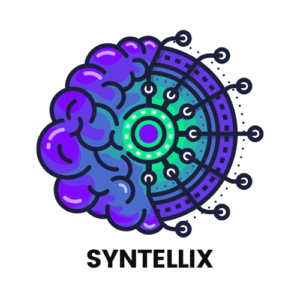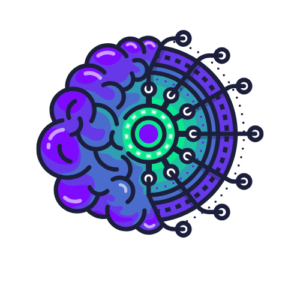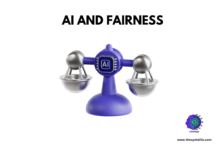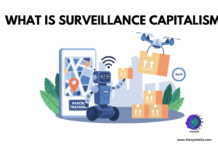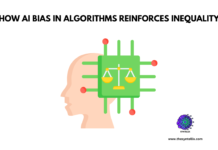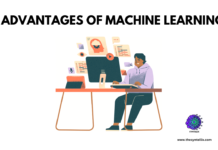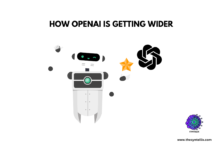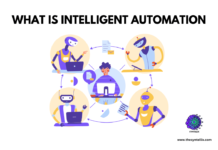Introduction
Imagine building a powerful tool that can heal or harm, enlighten or deceive—depending entirely on who’s holding the controls. That’s the paradox at the heart of dual-use AI models: sophisticated systems designed for good that can just as easily be repurposed for chaos. In a world racing toward smarter machines, understanding what makes an AI “dual-use” isn’t just a tech question—it’s a moral one, and it’s more relevant than ever.
In this blogpost we will explore what is dual use ai model and risks and benefits of dual use ai technology.
What is Dual Use AI Technology?
Dual use AI refers to artificial intelligence technologies that can be used for both beneficial and harmful purposes. These technologies are designed with positive intentions, but their capabilities can be repurposed in ways that pose significant risks.
In general terms, Dual-use can be any technology that can do both good and bad task at a time. The “dual-use dilemma” was first observed, when the synthesizing and mass production of ammonia was discovered, which transformed agriculture with modern fertilizers but also led to the creation of chemical weapons during World War I. The Dual-use dilemma has long been known in chemistry and physics, and has led to international conventions and treaties, including the Chemical Weapons Convention and the Treaty on the Non-Proliferation of Nuclear Weapons.
What Is Dual Use Ai Model?
Dual use ai models are the ai models that have wide range of abilities to outperform in various tasks. The term “dual use” defines that these model may have a wide range of positive impacts such as advancements in scientific research, enhancements in medical industry, or may also improve various sectors of human life. At the same time, these ai models can also come up with the potential risks such as automated surveillance, may spread misinformation, privacy violations etc.
Example: An AI model trained to analyze medical images for disease diagnosis could also be used to create deepfake medical records for insurance fraud.
Potential Risks Of Dual Use Ai Models
Dual-use AI models come up with a kind of digital double-edged sword. These models are built to do amazing things—like detect diseases, translate languages, or generate art—but they can just as easily be twisted for harm, like creating deepfakes, launching cyberattacks, or spreading misinformation at scale.
The real risk lies in how flexible and powerful these models are. One of the biggest challenges of dual use ai model is that it is often hard to predict exactly how a model might be misused once it’s out in the world. Something designed with good intentions can quickly become a tool for malicious actors if guardrails aren’t in place. It’s not just about what the AI can do, but who’s using it, and for what purpose. That’s why researchers are being called to think ahead—not just about how to make AI smarter, but how to keep it safe.
Here are 5 important risks associated with dual-use AI models:
- Misinformation & Deepfakes: AI can generate realistic fake videos, audio, and news articles, making it harder than ever to tell truth from fiction. This can be weaponized to manipulate public opinion, disrupt elections, or incite conflict.
- Cybersecurity Threats: Dual-use AI models can be used to automate hacking, craft highly convincing phishing emails, or find and exploit software vulnerabilities—making cyberattacks faster, smarter, and more scalable.
- Autonomous Weapons: AI developed for robotics or defense simulations can be repurposed into lethal autonomous weapons, raising serious concerns about accountability and the ethics of machines making life-and-death decisions.
- Surveillance & Privacy Violations: Tools like facial recognition and behavior prediction can be used by authoritarian regimes or bad actors to track, control, or suppress individuals, leading to massive privacy infringements and human rights abuses.
- Unintended Consequences: Even well-intentioned AI models can be misused or produce harmful outcomes if released without proper oversight—like generating biased outputs, reinforcing discrimination, or being repurposed in ways the creators never imagined.
These risks highlight why responsible development and regulation of AI is so crucial—it’s not just about what we can build, but what we should.
Benefits Of Dual Use AI Models
Dual-use AI models with open, widely available weights aren’t just ticking time bombs—they’re also powerful tools for good when used responsibly. These models empower a broader range of voices, from nonprofit groups to academic researchers, to innovate, experiment, and tackle big societal challenges. They help strengthen cybersecurity by enabling smarter threat detection tools, support public safety, and allow researchers to improve AI safety itself by testing and auditing models openly. Transparency goes up, innovation thrives, and barriers to entry come down. In the right hands, these AI models become not just tools—but catalysts for positive change.
Here are some benefits of dual use ai models according to the National Telecommunications and Information Administration (NTIA):
Enhanced Cybersecurity: Open foundation models can be tailored for cyber defense, enabling organizations to detect and mitigate threats more effectively. For instance, models like Security-BERT, fine-tuned from open models, assist in identifying cyber threats while preserving privacy. NTIA
Advancement in AI Safety Research: The accessibility of model weights allows a broader range of researchers, including those from academia and non-profits, to participate in AI safety research. This democratization fosters innovation in areas like vulnerability detection and the development of safety guardrails. NTIA
Transparency and Accountability: Widely available model weights facilitate third-party audits and evaluations, promoting transparency in AI development. This openness ensures that AI systems can be scrutinized for safety and ethical considerations, building public trust. NTIA
Promotion of Innovation and Competition: Open model weights lower barriers to entry, allowing diverse actors to innovate and customize AI applications across various sectors, including healthcare, education, and communications. IT Industry Council
Support for Public Sector and Non-Profit Initiatives: The availability of these models empowers public sector entities and non-profits to develop AI solutions tailored to public interest missions, enhancing societal well-being.
Real-World Examples of Dual-Use AI
Dual-use AI is already impacting various industries, from healthcare to cybersecurity. Here are some notable examples:
1. Healthcare
- Beneficial Use: AI-powered tools like IBM Watson Health are revolutionizing medical diagnostics, enabling early detection of diseases like cancer.
- Harmful Use: The same AI algorithms could be used to design toxic substances or manipulate medical data for fraudulent purposes.
2. Cybersecurity
- Beneficial Use: AI systems like Darktrace detect and prevent cyberattacks in real time, protecting sensitive data.
- Harmful Use: Cybercriminals can use AI to automate phishing attacks or develop malware that evades detection.
3. Autonomous Systems
- Beneficial Use: Self-driving cars powered by AI reduce accidents and improve transportation efficiency.
- Harmful Use: Autonomous drones equipped with AI could be weaponized for surveillance or warfare.
4. Natural Language Processing (NLP)
- Beneficial Use: AI chatbots like ChatGPT assist with customer service and education.
- Harmful Use: The same technology can generate fake news, deepfakes, or malicious content at scale.
Strategies to Mitigate Risks
To address the ethical challenges of dual-use AI, stakeholders must adopt proactive strategies:
1. Ethical Frameworks
Developing guidelines for responsible AI development is crucial. Organizations like the IEEE and Partnership on AI have created ethical frameworks to help developers navigate dual-use risks.
2. Regulation and Oversight
Governments and regulatory bodies must establish rules to govern the development and deployment of AI technologies. For example, the EU AI Act sets strict requirements for high-risk AI systems.
3. Collaboration
Tech companies, governments, and NGOs must work together to address dual-use risks. Initiatives like the Global Partnership on AI (GPAI) promote international cooperation on AI ethics and security.
4. Public Awareness
Educating users and developers about the potential misuse of AI can help prevent harm. Public awareness campaigns and training programs are essential for fostering a culture of responsibility.
The Role of Developers and Organizations
Developers and organizations play a critical role in ensuring that AI technologies are used ethically:
1. Responsible Innovation
AI systems should be designed with safeguards to prevent misuse. For example, developers can implement access controls to limit who can use certain AI tools.
2. Ethical Training
Educating AI developers on dual-use risks and ethical practices is essential. Training programs can help developers understand the potential consequences of their work.
3. Transparency
Openly communicating the capabilities and limitations of AI systems can build trust and accountability. For example, companies can publish transparency reports detailing how their AI systems are used.
Future of Dual-Use AI
As AI continues to advance, the challenges of dual-use technologies will only grow. Here’s what the future holds:
1. Emerging Technologies
Advancements in areas like quantum computing and generative AI could increase dual-use risks. For example, quantum AI could break encryption systems, posing a threat to cybersecurity.
2. Global Cooperation
International agreements on AI ethics and security are essential for addressing dual-use risks. Organizations like the United Nations are working to establish global standards for AI development.
3. Ethical AI Research
Prioritizing research that minimizes harm while maximizing benefits is crucial. For example, researchers can focus on developing AI systems that are inherently resistant to misuse.
Conclusion
Dual-use AI is a powerful tool that holds immense potential for both good and harm. While it can revolutionize industries and improve lives, it also poses significant ethical and security challenges. By adopting proactive strategies and fostering a culture of responsibility, we can ensure that AI innovation benefits humanity without causing unintended harm.
Call to Action:
Advocate for ethical AI practices and stay informed about dual-use challenges. Together, we can shape a future where AI serves as a force for good.
